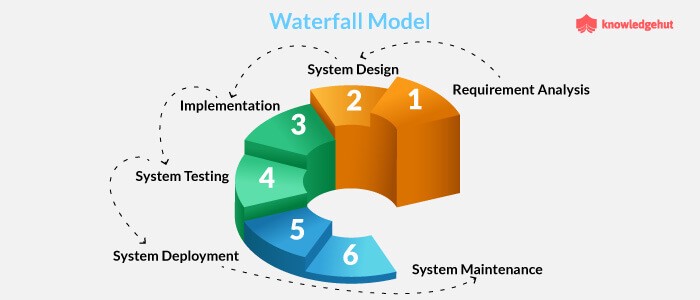As you’ve probably heard, there are many talks about project management in IT these days. In particular, there seem to be more options than ever for people in this field to choose from. But what do we mean when we say “project management”? For instance, is Agile just another label for Scrum? Or are they completely different? The truth is that these methodologies have similarities and differences in how they approach their goals. However, if you want to get started with your projects quickly and efficiently (and if you’re looking for the best way to do so), then understanding where each of these two approaches came from will help immensely—not only because it’ll give you insight into how they operate but also because it’ll help set expectations between managers and their employees when deciding whether one is appropriate over another.
Waterfall
The waterfall is a sequential method of project management. It has been used for many years and still has its place in the industry, but it’s not the best way to manage modern projects.
The waterfall is often associated with large projects that require a lot of planning and preparation before they begin, so it’s ideal for those kinds of situations. The main advantage of the waterfall is that each step in your project can be completed before moving on to the next one—you don’t have to worry about overlapping tasks or deadlines getting pushed back because someone was busy doing something else at another stage of the process.
But there are some downsides:
Scrum
Scrum is a framework for managing software development. It’s used by teams that want to be agile and responsive.
- It’s team-based, so the more people you have on your team, the better off you’ll be when it comes to completing projects quickly and efficiently.
- The lightweight approach makes it easier for new team members to learn what they need to know about Scrum without being overwhelmed by all its rules and procedures right away (since there aren’t many).
- Because of this, we recommend using Scrum if: – You’re working on complex projects where timelines are short; or – Your project has several stages that require different skillsets from different people (like multiple iterations).
Kanban
Kanban is a methodology for Lean project management or manufacturing. The Kanban methodology was invented by Taiichi Ohno, the Toyota executive who created the Toyota Production System (TPS) and the Toyota Way (the system of principles behind TPS). Kanban literally means signal or card (in Japanese, the kanban is a simple colored card) and refers to the signs used to represent various classes of materials in production.
The following describes how you can use the Kanban methodology to manage your projects:
A. What is your Goal? – Every project should have an end goal. With an end goal in mind, you can start thinking about how to plan, how much time you need, how much work it will require, what people you will need to help, etc.
Key Point: If you don’t know where you want to go, it’s nearly impossible to get there!
B. Set Your Work in Progress Limits – Work in progress (WIP) limits are typically set at 50% of your average throughput. This WIP limit should be determined before starting the project.
Agile
Agile is a set of software development methods based on iterative and incremental development, where requirements and solutions evolve through collaboration between self-organizing, cross-functional teams. Agile methods focus on responding to change by incorporating customer feedback into the product design process while maintaining a flexible approach to managing risk.
Lean project management – A waste-eliminating approach
Lean project management is an approach that emphasizes eliminating waste in all forms, from unused materials to wasted time. This methodology helps teams to streamline their processes and make their work more efficient.
Six Sigma – A data-driven approach
Six Sigma is a data-driven quality improvement approach that uses statistical methods to identify and solve problems. This methodology is often used in manufacturing and other process-oriented industries, as it helps teams to achieve consistent results.
Conclusion
I hope this article has been helpful to you. The evolution of project management methodologies is a fascinating topic, and it’s one that unfortunately gets overlooked in many books. This is a good piece for people who want to know all about Scrum, including the history of Scrum and agile development.

